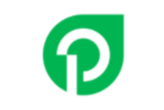Among the trends that will continue to characterize the packaging sector in 2022, the smart packaging is certainly the most interesting and versatile one, for the different applications to which it lends itself. The world of connected and active packaging includes a series of solutions that, thanks to the latest generation digital technologies, improve the supply chain management, product quality and the experience of consumer. Let's see some examples.
Active packaging is mainly used in the food & beverage, to modify the conditions of packaged foods or beverages in order to extend their shelf life. Thanks to special sensors, the package can release substances by stabilizing action or absorb unwanted compounds such as oxygen, moisture or ethylene to preserve the quality of the product.
-jpg-2.jpeg)
The cap of Carlsberg ZerO2 beer absorbs oxygen to increase the 15% shelf life of the product.
Copyright: Carlsberg Group
Intelligent packaging, on the other hand, is able to provide the consumer with indications on the state of conservation or quality of a food. Freshcode, for example, has chosen for its labels an intelligent ink that gradually changes color, indicating the level of freshness and the best time to consume the packaged chicken meat. When the product is no longer edible, the indicator becomes completely black. Smart packaging also includes a series of solutions that allow any kind of companies to improve supply management and product marketing. The connected packaging thus becomes a real multifunctional communication platform adjustable according to needs.
A constantly growing market
According to the forecasts reported by the consulting firm Mordor Intelligence in the report “Smart Packaging Market - Growth, Trends, Covid-19 Impact, And Forecasts (2021 - 2026)”, the smart packaging market will have an annual growth rate compound of 4.15% in the period 2021-26 and will reach a value of 48.72 billion dollars by 2026.
-png-2.png)
The growth forecasts of the smart packaging market in the various areas
geographic. Copyright: Mordor Intelligence.
This increase is linked to several factors: the increase in the demand for sustainable and long-life packaging products by food producers and distributors e beverages, the growing consumption of packaged foods and the need for brands to supply detailed information and extra content for the customer to differentiate themselves from competitor.
Areas of application
Smart packaging uses latest generation digital technologies – sensors, codes QR, RFID tags, NFC and augmented reality – to add advanced features to product packaging and respond to the new needs of companies and consumers.
A connected packaging can:
- Store and transfer the collected data to the manufacturer for the purpose of tracking – allowing you to find the exact position of the product in real time along the production and distribution chain – and anti-counterfeiting.
- Optimize supply chain management by improving control inventory and distribution processes, monitoring waste and identifying potential critical issues.
- Add information or marketing content to packages. Eg, thanks to augmented reality it is possible to create virtual games to increase public engagement and loyalty (gamification).
- Monitor chemical changes in the product and notify the customer and the manufacturer on its state of conservation, improving safety and helping companies to improve packaging.
- Change the characteristics of a food or drink in order to extend its life.
-jpg-2.jpeg)
RFID sensors are widely used in the food industry to monitor the freshness of the products.
Successful cases
Original, ecological, recyclable and intelligent: this is how we can describe the new packaging of the coffee produced by the Scottish company Manifesto Coffee.
On the back, the recycled paper label shows a QR code that allows you to follow all the updates regarding the brand and to quickly reorder the product.
-png-2.png)
The packaging designed by Manifesto Coffee is equipped with a QR code for reordering quickly the product.
Copyright: Manifesto Coffee
Another example, always coming from the coffee sector, is the packaging of the Serbian brand Grand. To hit the younger audience, it was decided to offer it to consumers the opportunity to see the "journey" traveled by the coffee, from the plantation to the cup.
-png-2.png)
An example of product storytelling made possible by smart packaging.
Copyright: Grand
By scanning the QR Code shown on the package, the customer can access a site containing the testimonies of royal growers and a series of cultivation projects sustainable coffee, which can be financed through the platform. Packaging managed to capture the attention of the public, generating 45% more sales than forecasts.
For its 19 Crimes wine brand, TWE winery has created an application of augmented reality, thanks to which the characters depicted on the labels of bottles come to life to tell their stories, offering the customer an immersive and original experience. The success of the initiative was such that it prompted TWE to create an app also for other wine brands, Living Wine Labels, which has registered since 2017 a total of 5.5 million downloads. An example of gamification aimed at involving the customers and differentiating the brand from its competitors generated an increase in sales of about 40% and made the company win numerous industry awards.
-jpg-2.jpeg)
The augmented reality app created by TWE for 19 Crimes wines.. Copyright:TWE
In conclusion, smart packaging lends itself to many areas of application, from the optimization of processes along the supply chain and improvement of product quality, to the design of new content and tools to inform, involve and retain the final consumer. It is up to the companies to identify the areas of greatest interest and develop the most suitable solutions to reach their own business objectives.

-jpg-2.jpeg?width=300&name=Lapp-di-realt%C3%A0-aumentata-di-19-crimes%20(1)-jpg-2.jpeg)
